Overview
Custom Integrations allow you to build your own custom integration with any app provider on Paragon, even if it’s not natively supported by our integration catalog. Similar to natively supported integration on Paragon, Custom Integrations provide the following features:- Embedded Connect Portal for your customers to activate and configure the integration in your app.
- Fully managed authentication with OAuth 2.0 or API Keys.
- Visual workflow editor for creating custom integration logic.
- Access to any API methods provided by the application’s API.
Building a Custom Integration
The general prerequisites for building a Custom Integration with any app provider on Paragon are:- The app provider must have a public API.
- Have access to the app provider’s API documentation.
- If the app provider uses OAuth authentication, create a developer account and developer application from the app provider.
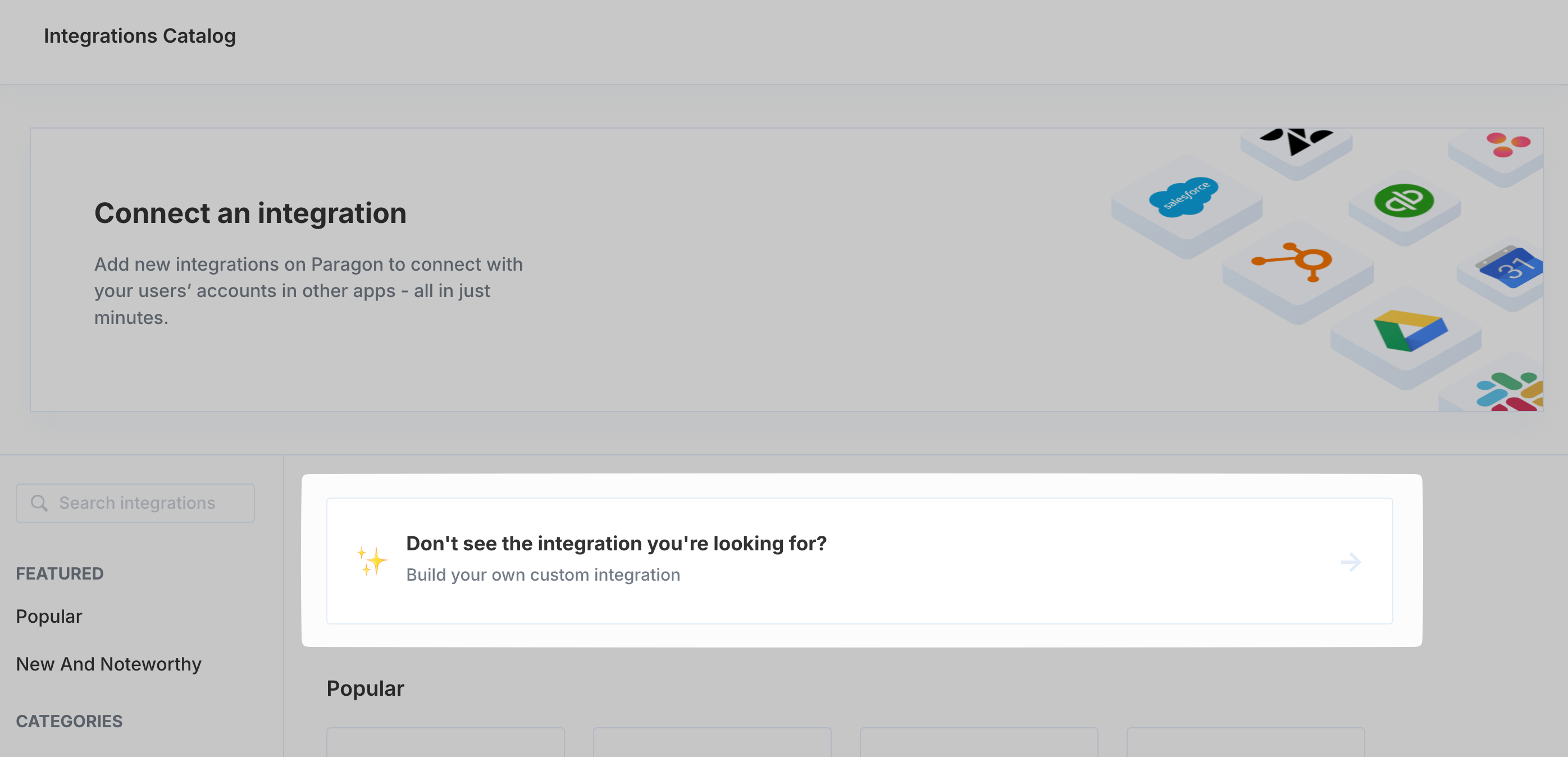
Step 1. Basic Info
You’ll first need to provide some basic information about the app provider that will appear in the Connect Portal for the integration.- Name - A short name for the app provider.
- Description - A short description for what the app provider does.
- App Icon - Only SVG formats accepted.
- Accent Color - The brand color that will be used in the accents of the Connect Portal for this integration.
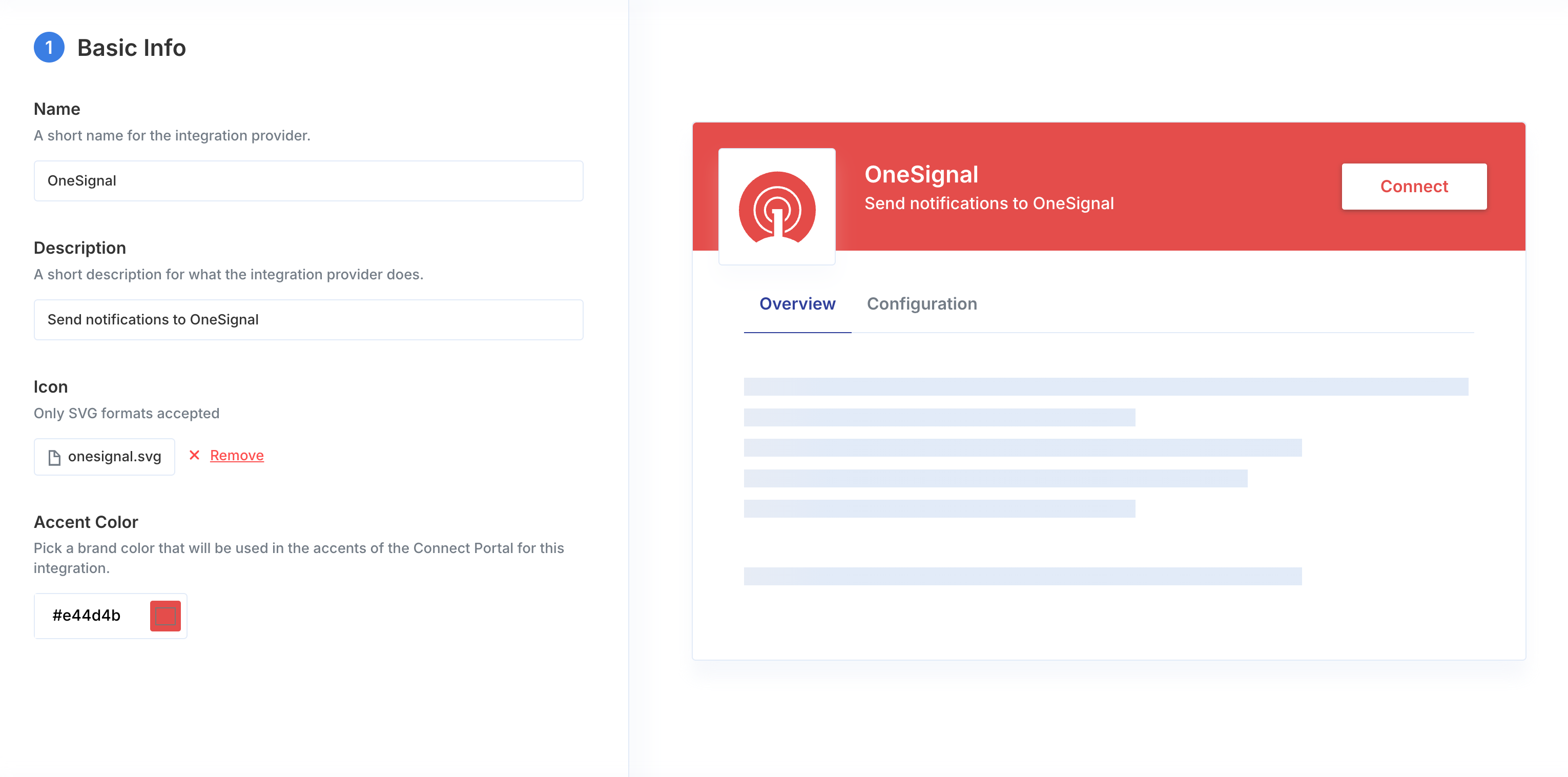
Step 2. Authentication Method
Select a method of authentication for your app provider. You can usually find this in your app provider’s API documentation. OAuth 2.0 is typically used when a user needs to authenticate access to their account. For example, a user signing into Salesforce so that your application can make changes on their behalf. Some app providers use API keys for authorization. An API key is a token that a client provides when making API calls. API keys are typically found within the app provider’s account settings.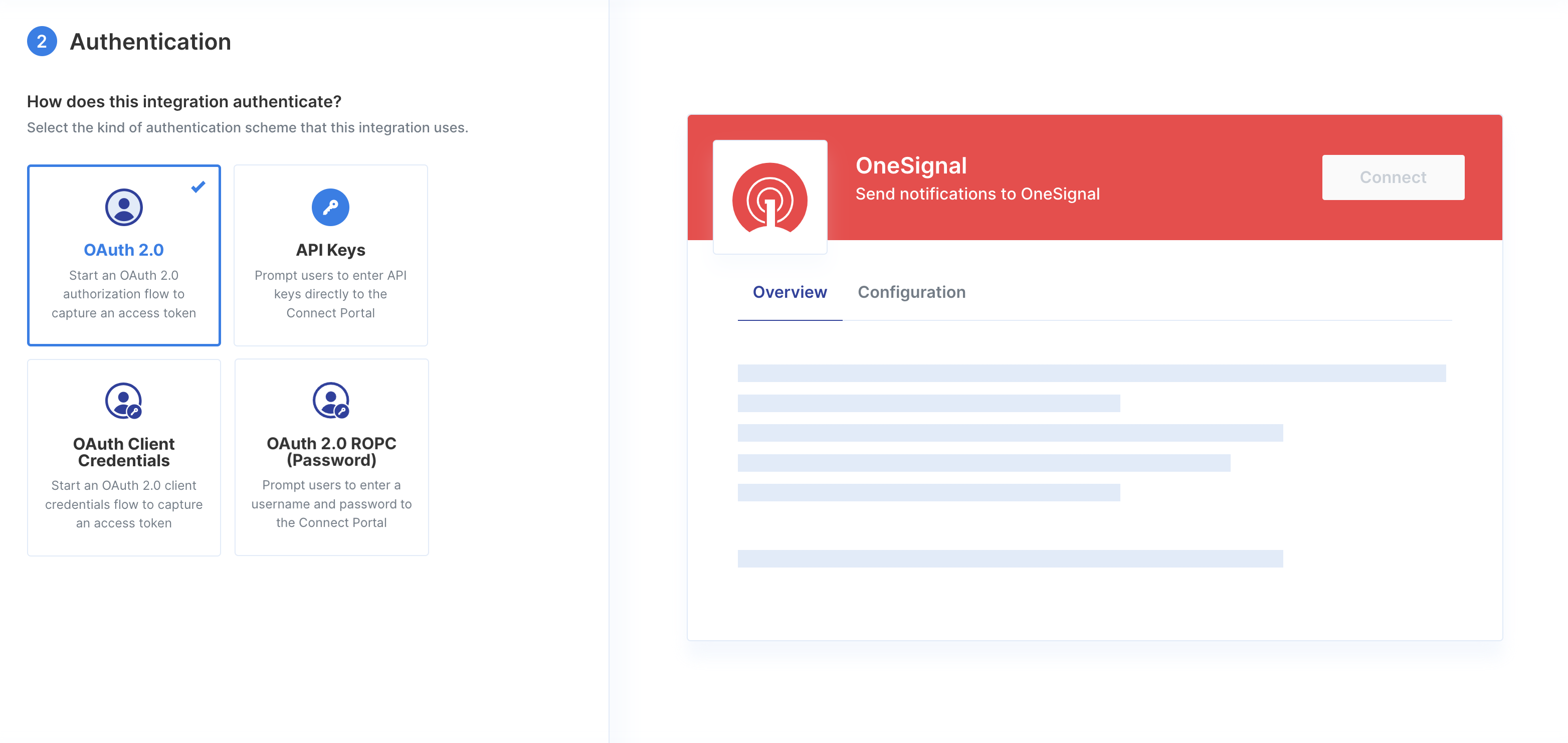
Step 3. Authentication Setup
OAuth 2.0
Specify the sign-in URL, also known as the Authorization URL, that this integration uses to begin the OAuth 2.0 authentication flow. If the URL includes a value that must be supplied by your end-user, use the Advanced Options to add input fields. You can usually find the OAuth credentials for your selected provider in their API Documentation. You’ll need access to the following credentials:- Auth URL
- Access Token URL
- Client ID
- Client Secret
- Scopes Requested
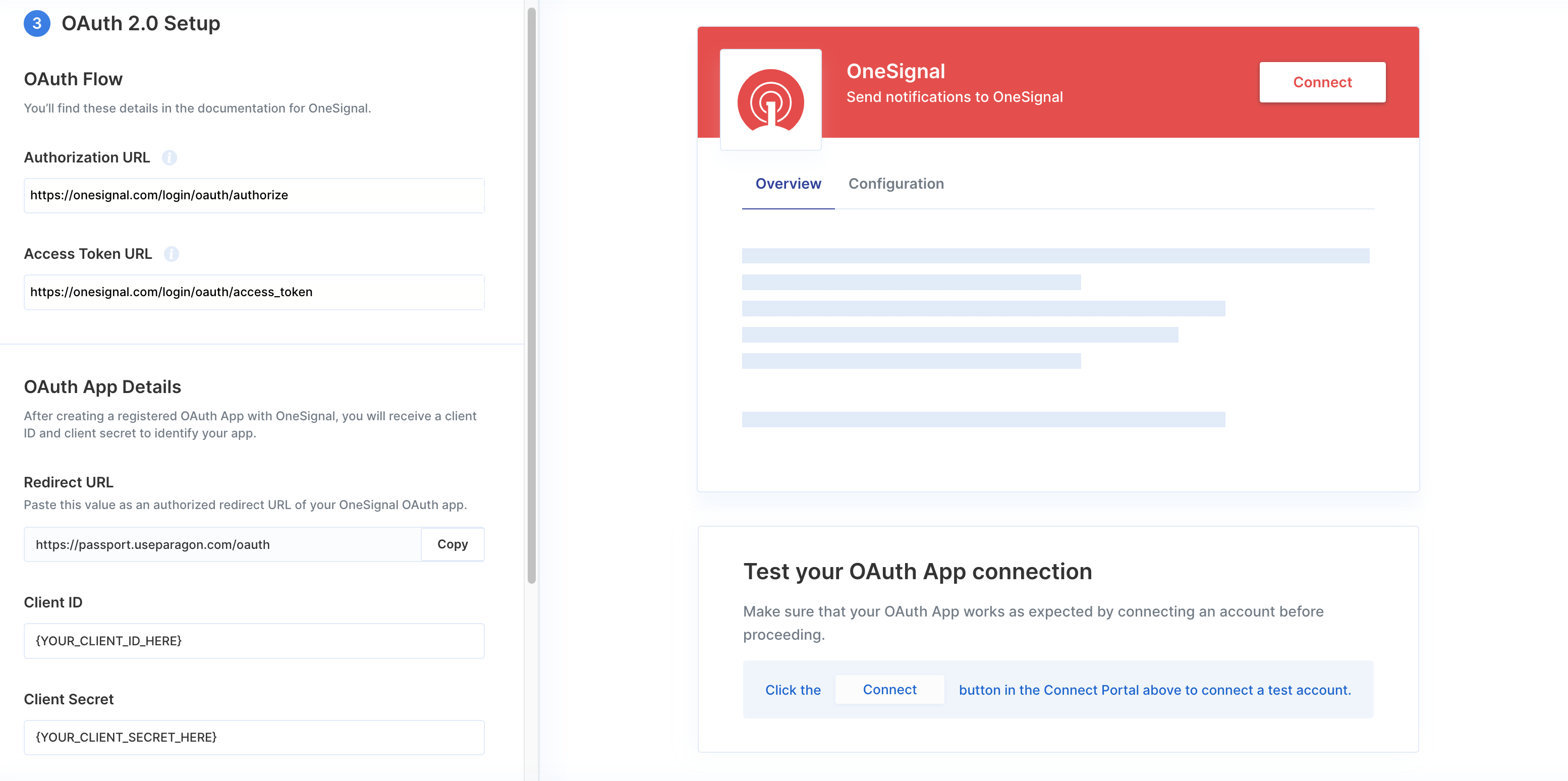
API Keys
You can add Input Fields for API keys or user details that are required to authenticate with your selected app provider.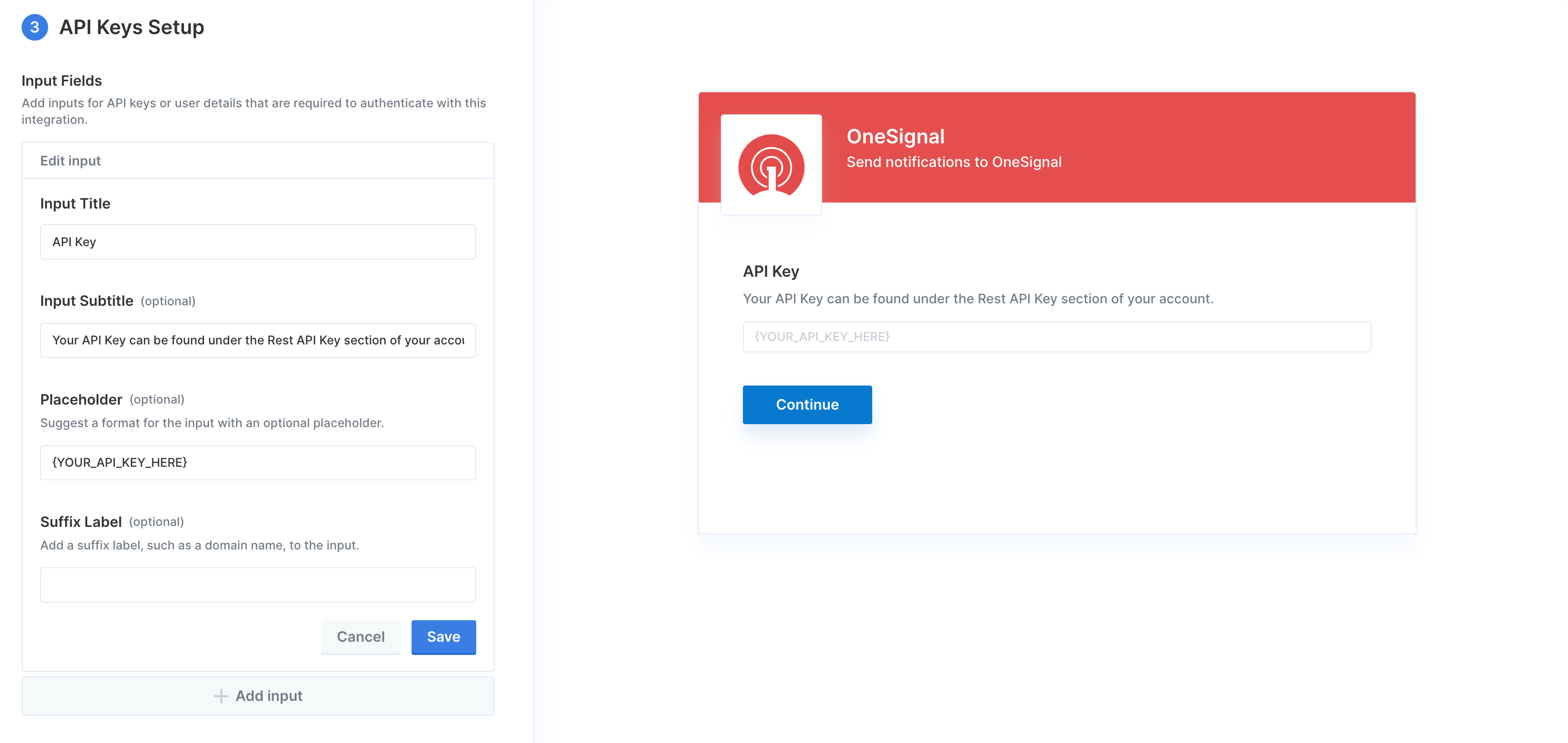
OAuth Client Credentials
Specify the URL that this integration uses to exchange an authorization code for access tokens, also known as the Access Token URL. The Paragon Connect Portal prompts your user for their Client ID and Client Secret needed to validate the authentication.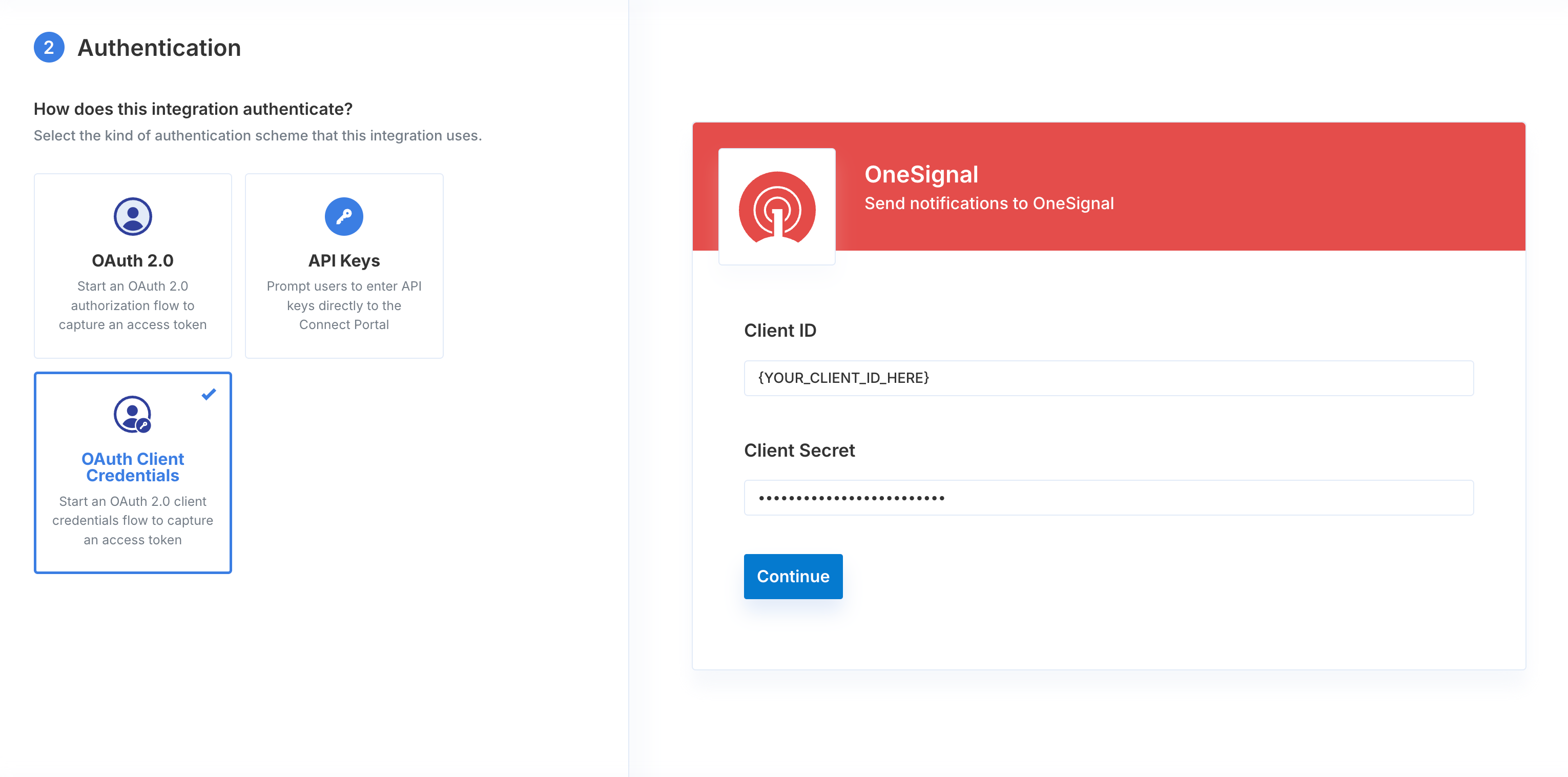
OAuth 2.0 ROPC (Password)
Specify the URL that this integration uses to exchange an authorization code for access tokens, also known as the Access Token URL, along with the Client ID, Client Secret, and any requested scopes for your app provider. The Paragon Connect Portal prompts your user for their Username, Password, and API Key needed to validate the authentication.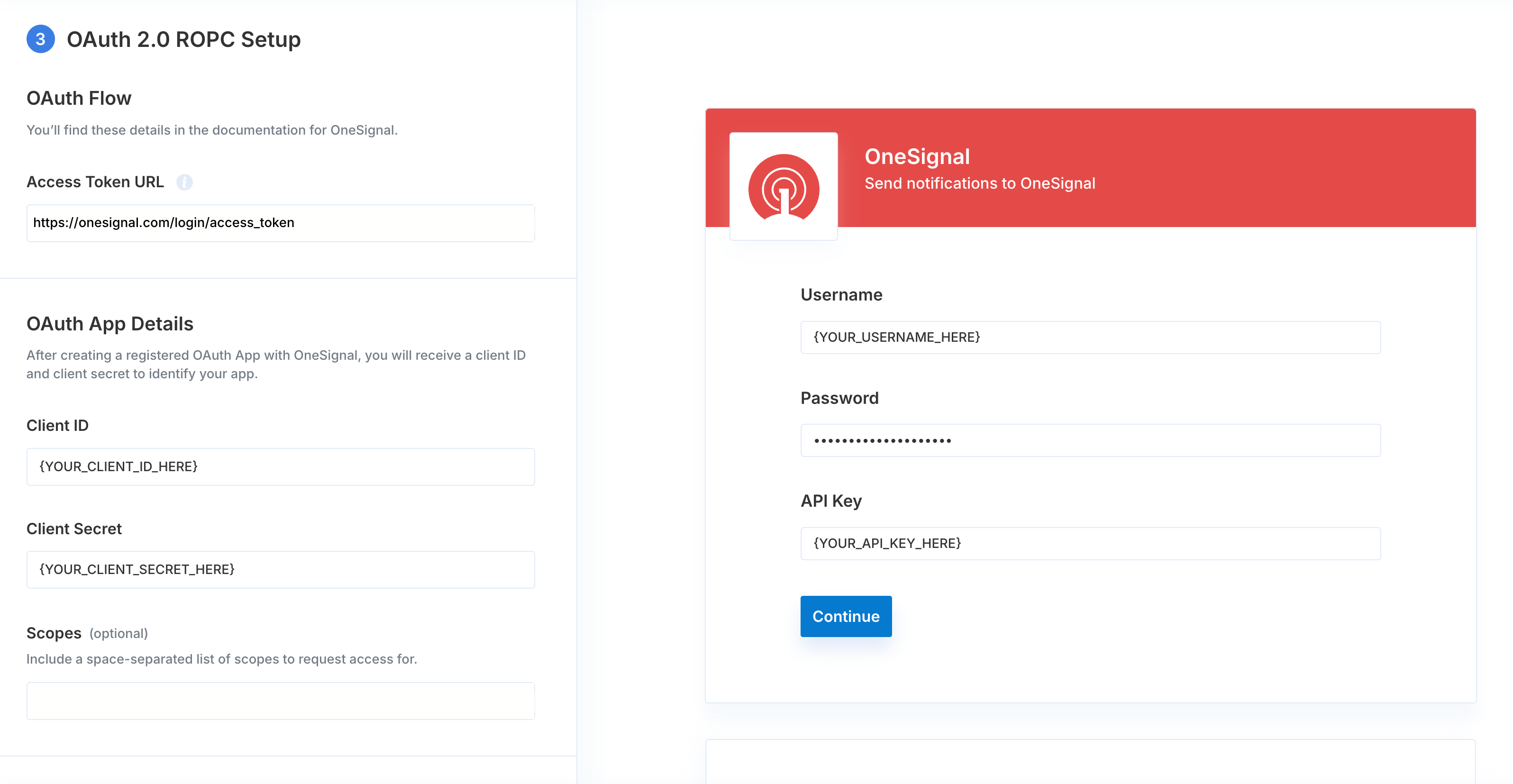
Enable button inside the Connect Portal preview to validate the connection. You must successfully enable your integration before moving to the next step.
Step 4. API Setup
You can also access your custom provider through the Workflow Builder or Paragon SDK.- API Base URL - Specify the base URL for API requests made to this integration.
- API Authorization - Specify how API requests get authenticated for this integration.
- Test Endpoint URL - Specify a request URL that can be used to test that your user’s account credentials are valid. This endpoint must be reachable via a
GETrequest.
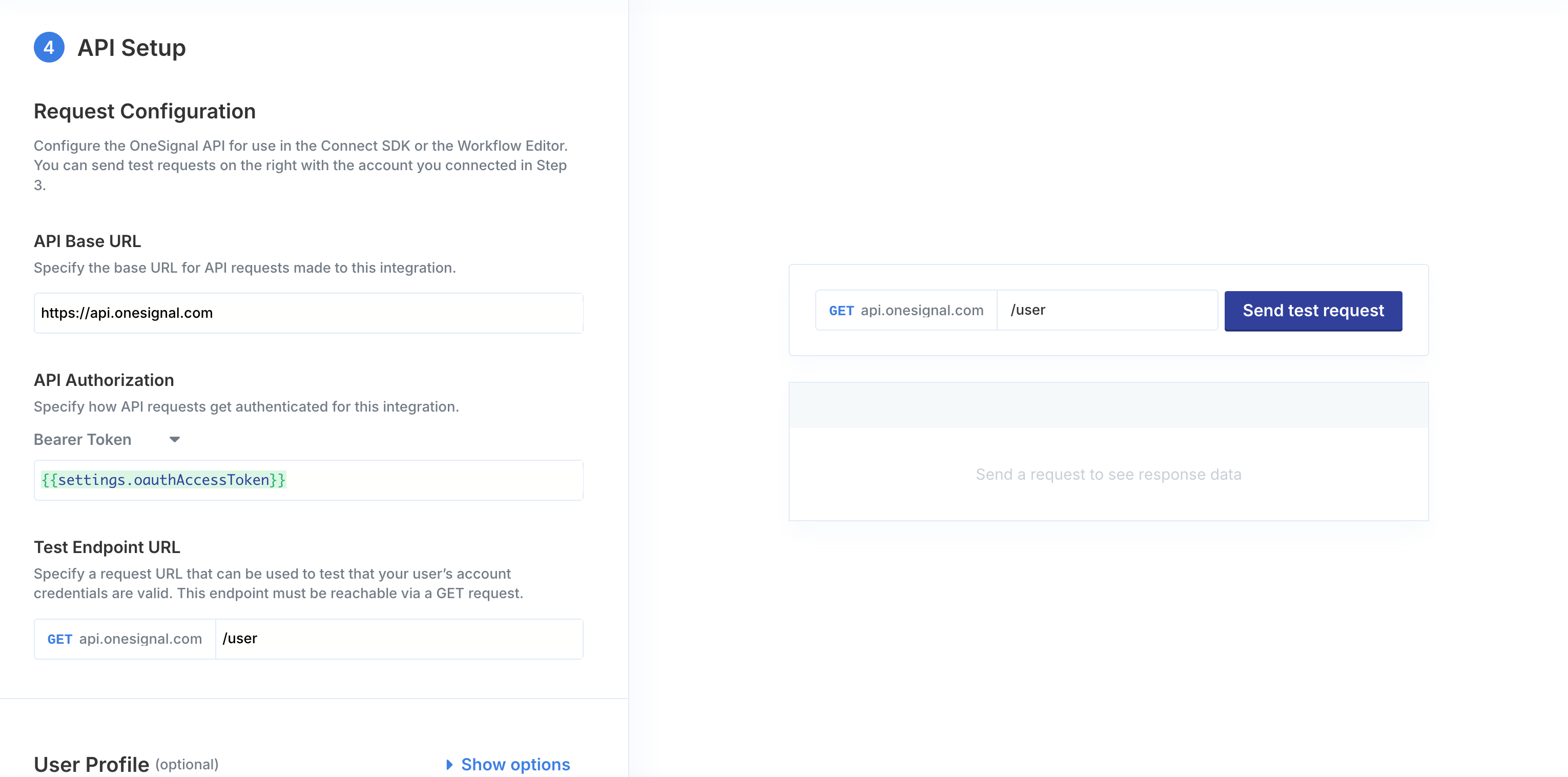
Send test request button to validate your custom integration configuration. Press the Finish button to save your custom integration.
Using Custom Integrations
Once you’ve added a custom integration to Paragon, you can access it through the Workflow Builder, Paragon SDK, and Proxy API.Workflow Builder
You can make API Requests to your app provider from the Workflow Builder by selecting your app provider from the workflow sidebar. Paragon prefills the request URL with the API Base URL from Step 4. Simply provide the API endpoint to the request that you want to make.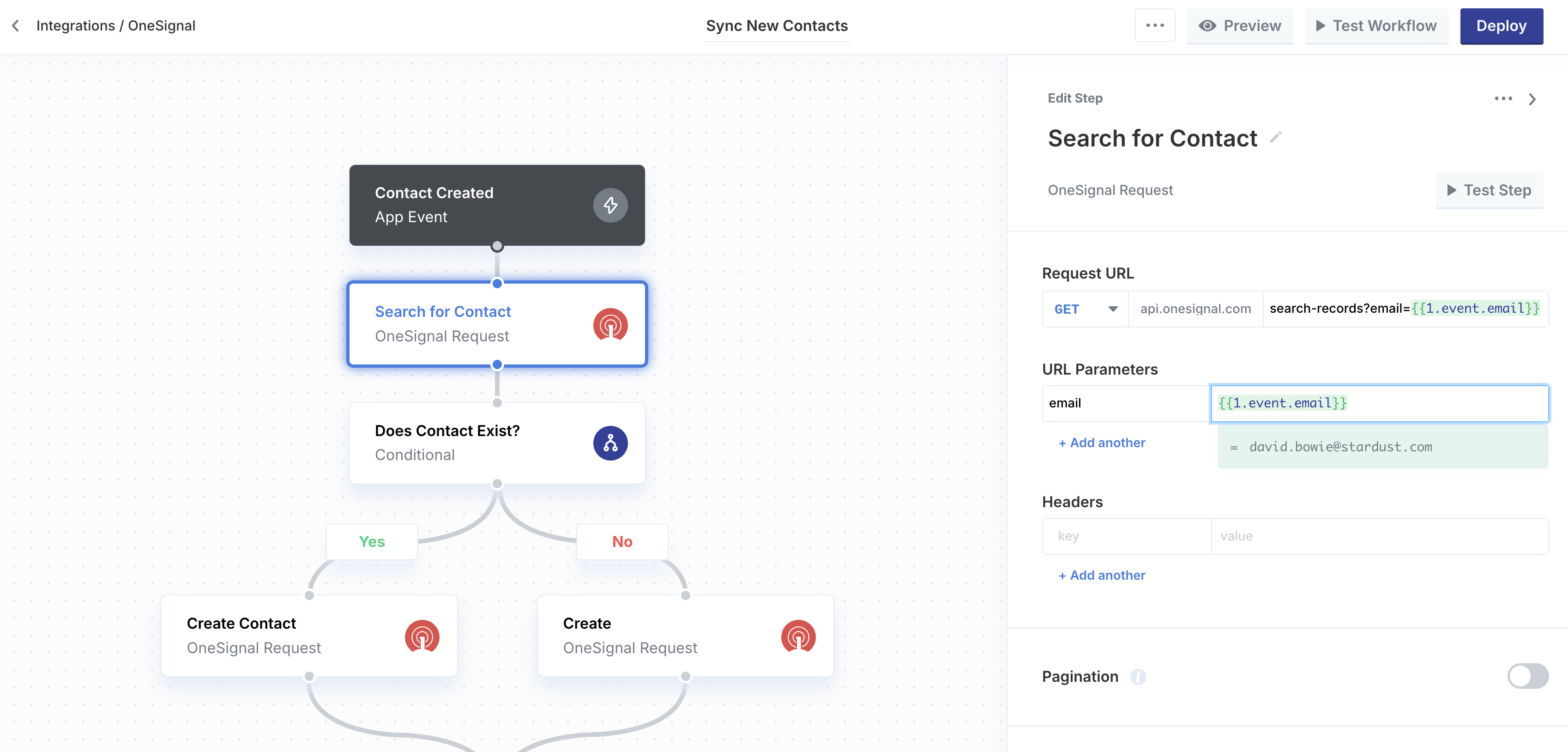
Paragon automatically provides the
Authorization information provided in Step 4 in the request.Discover Workflows
Learn more about building workflows in our comprehensive overview.
Paragon SDK
Once your users have connected their accounts, you can use the Paragon SDK to access any of your app provider’s endpoints on behalf of connected users. You’ll need to prefix the app provider’s name withcustom. when making requests. For example, a custom GitHub integration would be referenced as custom.github.
Note: When using custom app providers in the Paragon SDK, prefix the app provider name with
custom..JavaScript
JavaScript
Explore the Paragon SDK
Learn more about triggering integration logic from the frontend with the Paragon SDK.
Proxy API
If you’d like to issue a request from your server to your custom integration on behalf of an end-user, you can make the request to:REST API
- A Bearer token must also be specified with a Paragon User Token.
- This endpoint accepts any HTTP verb you want to use with the API.
- The Integration ID can be found in the dashboard (
/.../integrations/<Integration ID>) or with the Get project’s integrations API endpoint.
REST API
Explore the Proxy API
Learn more about triggering integration logic from the backend with the Proxy API.